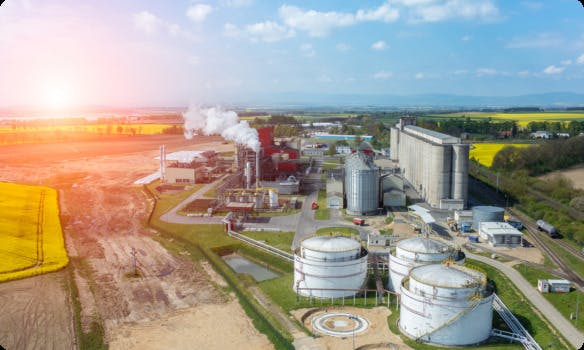The new EB-5 Reform and Integrity Act of 2022 includes provisions that will likely diversify the EB-5 market, making it more feasible for growing businesses throughout the U.S. and across industry sectors (not just commercial real estate in marquee areas) to raise capital from foreign investors.
Specifically, Senators Grassley and Leahy included benefits for investors that invest into rural areas that will bring needed capital to communities that have, until this point, not seen much benefit from the EB-5 program, and thereby better address the original intent of the program.
What is the definition of rural?
Before we get into the details of the new legislation, let’s define our terms. Immigration law defines a rural area as one that meets two criteria: 1) Not located in a metropolitan statistical area (MSA), as defined by Office of Management and Budget. MSAs include not only big cities but moderately sized cities as well. 2) Not in a city or town with a population of 20,000 people or more.
“This means it pretty much has to be in the countryside,” states immigration lawyer, and former USCIS Acting Director, Robert Divine. He also notes that “there are pretty desolate locations, with no one in sight, that are still officially part of an MSA."
So rural really means rural. There is no playing with the definition the way maps were gerrymandered in the past to qualify for the older definition of high unemployment areas.
Rural advantage 1: priority processing
A big advantage that investors will get by making an investment into a business located in a rural area is priority processing. The new EB-5 legislation states, “The Secretary of Homeland Security... shall prioritize the processing and adjudication of petitions for rural areas.”
While we don’t yet know how much faster I-526 priority processing will be compare to regular processing, Robert Divine anticipates that priority processing will put rural petitions in the front of the line, in some way. While he doubts that it will result in rural petitions always and instantly going to the very front of the line, he surmises there may be some kind of “throttling,” or ratio that needs to be met.
Standard vs. premium processing: the difference could be several years
When asked for a comparison between standard and premium processing times, Divine bases his prediction on what he’s seen. “The last time we knew, it was four or five years to get an I-526 petition approved. All of those people who were in the queue before, when that was the time frame, are back in the queue and they’re ahead of all the people who would now be investing.”
In contrast, rural priority processing times could be much faster. “To venture a guess, maybe a prioritized petition could take a year to process instead of four or five years,” Divine offers.
As a registered securities broker working exclusively in EB-5, I’ve seen the allure faster processing has for investors. I’ve seen investors flock to an investment that was exhibiting red flags or warnings related to lack of transparency and risks to both capital repayment and business viability, but the promise of faster processing was sufficient to attract a large share of EB-5 investors.
Time can be critical when it comes to having the right to come live or stay in the U.S. Armed with this advantage, I believe rural investments will get the attention and investment capital of many investors going forward.
Rural advantage 2: the 20% set-aside means visas are immediately available upon I-526 approval, a huge incentive in retrogressed countries
For investors from countries that have exhausted their visa availability in future years — which today is only China but is likely to include Vietnam and India soon — the visa set-aside makes rural investments even more attractive because a new line of immediately available visas is essentially created.
Chinese investors face a 10 – to 14 year wait for EB-5 visas to become available. But now, by making an investment in a rural project, Chinese investors will have an EB-5 visa available as soon as their I-526 is approved.
“There’s a significant chance that a Chinese investor who invests now in a rural project,” states Divine, “could get approved and a visa number issued to them and immigrate to the U.S. by the end of next year — by September 2023. That’s serious.”
I believe this opportunity is huge as rural EB-5 investments reinvigorate the Chinese market. And the same will be true for Indian and Vietnamese investors very soon.
4,000 and 6,000 rural visas likely available in the next two fiscal years
It’s worth noting just how many set-aside EB-5 visas will be available. This fiscal year, with the spill-over of unused family-based visas, there are about 4,000 rural EB-5 visas available. And visas in the rural set-aside that are not used will carry over into the next fiscal year’s availability.
Divine gives us an example: if only 300 rural visas in FY 2022 can be filed and processed by USCIS, the remaining 3,700 would spill over into the next fiscal year. Thus, if in FY 2023 there are 10,000 EB-5 visas overall, and 2,000 rural visas (20% of the yearly total), adding the spillover of 3,700 visas from FY 2022 yields a total of 5,700 rural visas available next year.
“That’s a strong incentive,” remarks Divine. “There hasn’t been anywhere near 6,000 investors putting capital into rural projects in the last many years.”
Indeed. The legislative efforts of Grassley and Leahy will alter the balance of power going forward. The Regional Center Program could in one year allocate more visas for rural investments than in the past 14 years combined. This is exciting!
Rural advantage 3: direct jobs are required to make up at least 10% of the total
The 10% direct job-creation requirement practically means that investments can not rely completely on construction jobs. This feature of the Reform and Integrity Act legislation will eliminate some of the commercial real estate projects we’ve seen in the past because they don’t have an operational component in their job creation plan (think condo developments or office towers).
Rural projects are highly likely to have an operational component (think manufacturing) so such a provision doesn’t generally hurt them; in fact it helps them by removing competition. The market will follow the path of least resistance, and rural will get a larger share of the EB-5 pie.
Conclusion: rural provisions are a big-win for middle America
The trifecta I’ve described — priority processing, EB-5 visa set-asides, and a direct job creation requirement — is a big win for businesses located in communities across the nation looking to attract less expensive investment capital. Given the lobbying heft of big developers, and the sizeable financial benefit the EB-5 program has provided them up until now, this was no small feat.
I think the loss of pooled direct investments was a shame. It was clearly a result of the lack of lobbying capability that smaller markets can muster to protect their interests.
But I applaud lawmakers for finding a way to put together legislation that begins to level the playing field for smaller markets, while mandating needed securities oversight and accountability.
By reducing the investment amount differential to just $250,000 for non-TEA areas (urban), the urban market can still compete for investors, though it may require a different investment structure, possibly offering real equity to investors.
This new legislation reauthorizes the Regional Center Program for five years, and revitalizes it to closer serve the vision Congress first had for EB-5: economic stimulus for American communities with distinct advantages to communities in real need.
Watch the video "Rural EB-5 investments in 2022" with immigration lawyer Robert Divine and registered securities broker Kurt Reuss.










